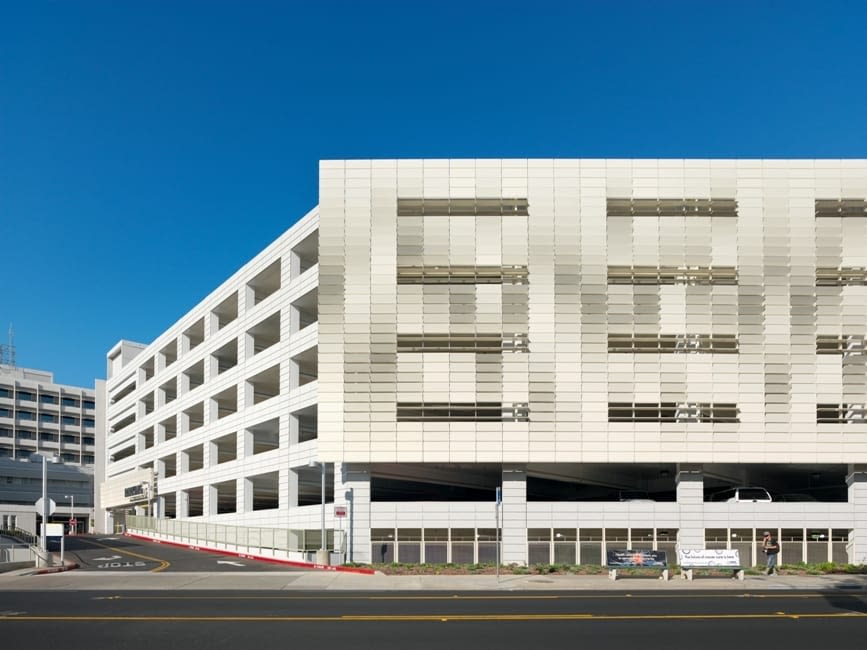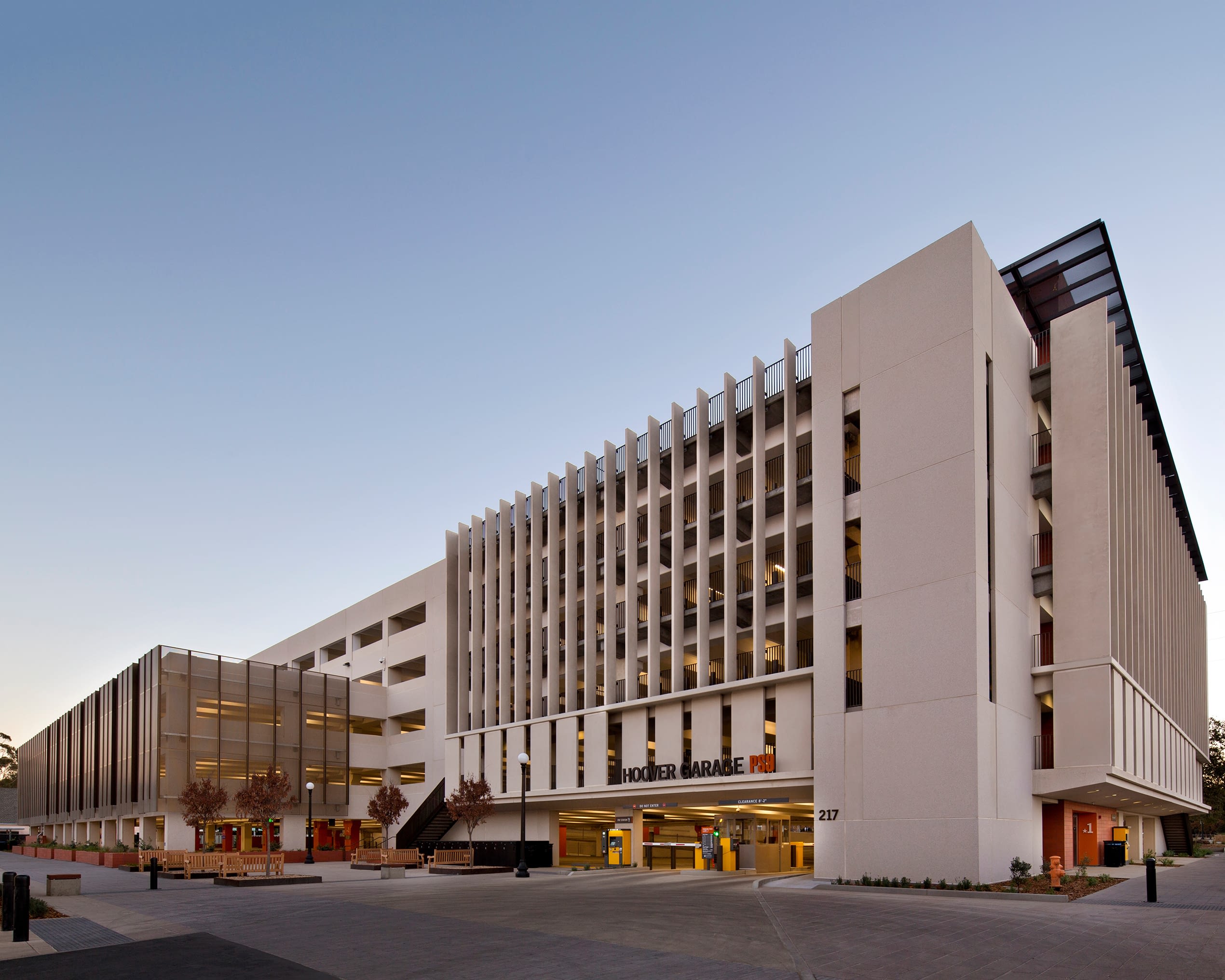
Project Overview
UC Davis Medical Center Parking Structure III is a winner of both the 2015 Design Award for best hybrid parking structure and a 2014 recipient of the honorable mention award.
When you build anything in California, safety and performance are always first in mind. When leaders of the University of California at Davis (UCD) Medical Center began planning for a new six-level parking garage to accommodate 1200 cars, they knew it would have to meet the most rigorous seismic requirements. Administrators also wanted a structure that reflected the hospital’s reputation as one of the leading medical facilities in the country—and it had to adhere to a tight timeline and budget.
Going with a precast concrete design enabled them to achieve all of these goals. “The use of precast concrete minimized the impact of the structure, while reducing the actual on-site duration of the project,” says Genaro Morales, director of architectural design for Watry Design in San Jose, Calif. “Cast-in-place would have required substantially more construction activity for forming and placement of the concrete and rebar.”
Precast Solution
Acting as a highly visible “front door” for patrons and patients, the new UCD III parking structure that sits at the front of the UCD Medical Center Facility had to stand out while still blending with the rest of the campus architecture.
The architect chose a white architectural finish for the structural precast concrete columns and spandrels to match the precast concrete’s color to that of the hospital finish. Reveals were added to the spandrels, alongside thin, horizontal openings to emphasize the horizontal nature of the parking structure, and aluminum louvers were attached to the precast concrete facades facing the street. The louvers were each angled to pick up lighting from passing headlights, to create an image of movement from one set of louvers to the next as cars pass.
“Precast concrete allowed us to meet all of the exterior facade detailing within budget,” Morales says. “Shapes, textures, and color matches were much easier and economical to achieve with precast concrete than would have been possible with cast-in-place concrete.”

To meet seismic design goals, designers incorporated precast concrete hybrid moment frame to provide seismic resistance. The use of the frame also eliminated the need for shear walls, which helped to create more wide-open interiors to maximize space. “The decision to use the precast concrete hybrid moment frame was critical given the high-seismic requirements of the structure,” Morales says.
The end result is a parking structure strategically located adjacent to the hospital that provides optimal access for patients and visitors, all while showcasing the functionality and aesthetic versatility of precast concrete, he says. “Being that the structure is located in such a high-profile site, we love the fact that it meets the high and demanding qualities of the overall campus.”



